Table of contents
Ginger ( Zingiber officinale R.) is very popular raw - and not only because of its beneficial properties. The organic root in particular has a characteristic taste that is given to it by the ingredient gingerol.
Use in the kitchen
How do you eat ginger? Fresh, organic ginger is best used when it is well washed and with the peel. Many nutrients are found in the outer layer of the ginger root. 2 You can grate ginger directly into dishes against the grain. Or you can cut ginger into slices with a sharp knife, then into sticks and finally into cubes.
In curries, stews or soups ( pumpkin, carrots ), ginger tastes great when briefly fried with onions and garlic . As a base for traditional soup dishes, ginger is also processed into pastes, e.g. the Malaysian Laska curry paste with turmeric.
Can you eat ginger raw? You can use raw ginger to refine dips, sauces, spreads or salads. Drinks such as smoothies, ginger water or tea get a pleasant and fruity spiciness from the raw spice. Ginger can even be used in vegan and raw gingerbread: see raw vegan Elisen gingerbread .
Ginger ale and ginger beer are also very popular - although both are no longer raw. Freshly brewed ginger tea can be made with slices or grated root.
To extend the shelf life of ginger, it is placed in brine or syrup. The salty version is known from sushi dishes, which often have wafer-thin ginger slices as a side dish (additionally pickled in rice vinegar). As a sweet version, ginger root is often processed into candied ginger . This is ideal for baked goods such as cakes or speculaas biscuits, which are also available in a vegan version. Ginger in all possible variations also goes well in jams, chutneys or apple sauce: raw, candied or as a powder ( ground ).
Vegan recipe for summer rolls with ginger peanut sauce
Ingredients (for 2 servings): 70 g glass noodles ; 8 pieces of rice paper; 100 g smoked tofu ; a small cucumber ; 2 small carrots ; 1⁄2 yellow pepper ; 100 g raw red cabbage ; some fresh mint and coriander leaves ; 40 g peanuts ; 2 garlic cloves ; 1 tsp fresh ginger, grated (organic); 1 tbsp lime juice ; 1 tbsp maple syrup ; 1 tbsp soy sauce ; 2 tbsp (ground) sesame seeds .
Preparation: Cut the tofu, cucumber, carrots, bell peppers and red cabbage into thin sticks about 5 cm long. Process the peanuts, garlic, ginger, lime juice, maple syrup and soy sauce in a blender or with a hand blender to form a cream (add water if necessary). Cook the glass noodles in water according to the instructions on the packet. Soak the rice paper in a large, flat bowl of warm water for about 30 seconds. Then carefully place the paper on a large plate. Place the vegetables, tofu, glass noodles and herbs in the middle of the paper. First fold in the sides on the left and right. Then place the bottom end over the filling and form into a roll. Sprinkle the vegan summer rolls with a little sesame and serve with the peanut-ginger sauce.
Vegan recipes with raw ginger can be found under the note: " Recipes that have the most of this ingredient ".
| Not only vegans or vegetarians should read this: Vegans often eat unhealthily. Avoidable nutritional errors . |
Purchasing - Storage
Ginger is available from major retailers such as Coop, Migros, Denner, Volg, Spar, Aldi, Lidl, Rewe, Edeka, Hofer, Billa and in organic supermarkets such as Denn's Biomarkt and Alnatura . Ginger mainly comes from tropical countries. The taste can vary depending on the origin - ask your trusted retailer.
To ensure good quality, pay attention to the weight, skin and consistency of the tuber. It should feel firm and heavy in your hand. 2 Since ginger thrives in greenhouses and as a pot plant in Central Europe, it can sometimes be found fresh and organic at regional weekly markets.
In temperate climates, ginger is in season at the end of the year : Ginger is harvested when the plant retracts its leaves - that is, in the autumn when temperatures cool. The ripening of the rhizomes can continue until December. 3 In tropical regions, ginger is harvested all year round, which is why it is available in supermarkets all year round.
The availability of ginger varies depending on the size of the store, catchment area, etc. Our recorded food prices for the DA-CH countries can be found above under the ingredient image - and by clicking you can see their development at different suppliers.
Storage tips
Fresh ginger will last in the fridge for around 3 weeks. If there is too much moisture, mold will easily form on the ginger. You can help this by wrapping the ginger in a beeswax cloth or a paper bag and placing it in an airtight container in the fridge. Experience has shown that the easiest and safest method is freezing. Either cut it into small, practical pieces beforehand or freeze the whole root and grate it as needed.
Similar to potatoes or garlic, ginger also tends to form shoots. This causes it to lose some of its flavor. But otherwise this has no negative effects. If you still don't want to eat it, these pieces are good for growing new ginger plants.
If you want the ginger to remain edible for a very long time, methods such as drying using a dehydrator or pickling (sugar syrup, brine or vinegar) are good alternatives.
Ingredients - Nutritional values - Calories
Ginger has around 80 kcal per 100 g, with hardly any fat (0.75 g/100g) and protein (1.8 g/100g), but 18 g of carbohydrates. 1 The maximum recommended daily intake for fresh ginger is around 10 g, 14, 21 so a little more than a tablespoon (around 8.5 g) when freshly grated.
The potassium content of ginger (415 mg/100g) is comparable to that of nasturtium or fennel bulb . Much higher amounts of potassium are found in dry spices such as coriander leaves (4466 mg/100g) or dill (3308 mg/100g). 1 However, you consume very little of it.
Vitamin B6 (0.16 mg/100g) is contained in comparable amounts in mint and red algae (raw) . However, 100 g of ginger, which is far more than the normal amount consumed, can only cover 11% of the daily requirement. Sunflower seeds (1.3 mg/100g) and dried onions (1.6 mg/100g) contain much more of this vitamin. 1
Magnesium (43 mg/100g) and manganese (0.23 mg/100g) also provide 11% of the daily requirement in 100g of ginger. Better sources of magnesium are seeds and nuts: e.g. hemp seeds or hazelnuts . Broccoli has a similar manganese content to ginger. Better sources of manganese are pine nuts with 8.8 mg/100g. 1
The complete ingredients of raw ginger, the coverage of the daily requirement and comparison values with other ingredients can be found in our nutrient tables. In the article Nutrients explained you will get a detailed insight into the topic.
Health effects
The health effects of ginger are due to the secondary plant substances it contains ("ginger benefits").
Secondary plant substances
Our article on secondary plant substances provides an overview of the classification of substance groups, their occurrence in foods and possible effects on humans.
So far, over 160 components of ginger have been isolated and identified. 10 Ginger contains the following secondary plant substances:
- Isoprenoids: Monoterpenes (including limonene, citral, geranial, neral, alpha phellandrene, ar-curcumene, p-cineole [eucalyptol], alpha-terpineol, camphene, beta-myrcene); triterpenes (steroids); Sesquiterpenes (alpha-zingiberene, farnesene, nerolidol) 10,11,24,25,26
- Alkaloids: Phenyl alkaloids 10
- Polyphenols: hydroxycinnamic acids (ferulic acid), flavonoids: flavonol (quercetin); phenols (gingerdiol, gingerol, shogaol, paradol, zingerone, gingerone A, gingerone B) 4,11,22,23
- Other organic compounds: arylalkanones, diarylheptanoids (curcuminoids) 4
However, it should be noted that the composition of the secondary plant substances in raw ginger can vary depending on the variety, time of harvest and growing conditions. Therefore, quantities are only of limited use and should only be understood roughly.
The ginger root contains a viscous balm consisting of a spicy fraction (zingiberol, gingerol) and an essential oil fraction (oleoresin). The essential oil can have a different composition depending on the chemotype (origin, cultivation of the plant). Typical ingredients are mono- and sesquiterpenes, including zingiberol, which is important for the smell. 4
Monoterpenes occur in lower concentrations and contribute to the aroma, especially citral (geranial and neral). Other components are the pungent substances (arylalkanones) found in fresh ginger, including gingerols [(6)-gingerol, (8)-gingerol and (10)-gingerol]. Shogaols are only present in trace amounts in raw ginger, but in large quantities in thermally treated ginger roots . Gingerols are also converted into shogaols (shoga = Japanese for ginger) by the elimination of water, e.g. during storage or drying, which changes the antioxidant capacity. Ginger also contains diarylheptanoids (curcuminoids), organic acids and mucilage. 4
Studies show that ginger has a wide range of biologically active components. It has a preventive effect against obesity and has a protective effect on the gastrointestinal tract. The ingredients in ginger stimulate the secretion of saliva and gastric juice by stimulating the heat receptors in the oral mucosa. This inhibits gastric motility (stomach movement) and stimulates intestinal peristalsis (intestinal movement). This speeds up the gastrointestinal transit time. 4
Due to the gingerols and shogaols, ginger has antiemetic effects (against nausea and vomiting). A positive effect has been observed in some cancer patients who take ginger to combat nausea and vomiting during chemotherapy. 9,10 Research shows that ginger has anti-inflammatory, antiulcer (against infectious ulcers) and antitumor activities; as well as antipyretic, anti-coagulant, antihyperglycemic, antioxidant and lipid-lowering or antidiabetic properties. Ginger can also have a positive effect on the heart and antiarteriosclerotic effects. 4, 10,11,22 The pain-relieving effect can also be demonstrated in osteoarthritis, a common degenerative joint disease, using ginger extracts. 20,22
The antioxidant effect of gingerol is confirmed by a study on skin inflammation (in mice) triggered by UVB rays. 19
Different processing stages affect the antioxidant capacity of ginger. Studies show that dried ginger has the highest antioxidant capacity compared to fried and carbonated ginger (fresh ginger with mineral water) due to higher levels of phenolic compounds. Fresh ginger, on the other hand, has the lowest antioxidant capacity. 24
Another spicy-tasting phenolic group found in ginger plants is paradols. Their effects on human health are still in the early stages of research. Antimicrobial and antifungal effects are known so far. The chemopreventive effects and their potential to trigger apoptotic cell death in cancer cells, as is known from curcumin in turmeric, need to be confirmed by further studies. 23 If paradols are hydrogenated, as in tea preparation, the shogaols described above are formed. 4
The diarylheptanoids (curcuminoids) found in ginger act as inhibitors, including in the synthesis of inflammatory mediators. Shogaols and gingerols appear to inhibit (depending on the dose) the release of histamine and can potentially alleviate allergy symptoms. 4
Ginger extract is also effective against bacteria such as Bacillus subtilis, Staphylococcus aureus, Salmonella typhi, Escherichia coli and Proteus mirabilis . Gingerols help with schistosomiasis (tropical disease caused by Schistosoma leeches). Ginger can have an antihepatotoxic effect on liver damage caused by alcohol, galactosamine or carbon tetrachloride and improve the liver's antioxidant activity. Chewing ginger root blocks voltage-dependent calcium channels, which lowers blood pressure, strengthens the heart muscle and dilates the blood vessels. 4
Dangers - Intolerances - Side effects
As with most foods, ginger should be consumed in moderation. Ginger is a drug that can have undesirable effects when taken in high doses. 14 The blood-thinning effect 11,12,14 has a reputation for increasing nose or menstrual bleeding, but this is controversial (see Ginger, candied ). The spiciness of ginger can also irritate the digestive tract. Shogaols were considered to be spicier than gingerols, but more recent research postulates the opposite (see Ginger, ground ). If you want to use ginger specifically for a disease, seek advice from a doctor, especially during pregnancy. 12
In rare cases, headaches, stomach pain, heartburn, dizziness and diarrhea may occur with regular consumption in higher doses. 9,21
What is the ideal daily dose of ginger? The dosage of ginger should be individualized: according to age, sensitivity, or medical history. The quality of the ginger itself, that of the product containing ginger, and the quality of the processing (powder, extract, oils, etc.) can vary greatly. 12 General dosage recommendations for fresh ginger root are 10 g per day for adults and 5 g for children. 14,21 In our opinion, a maximum daily amount of 50 g, as circulated on the Internet, is not supported by any scientific study.
For comparison, the maximum dosage of dried ginger powder on an empty stomach should be less than 6 g/day to avoid gastrointestinal problems. Intake of more than 6 g can lead to increased erosion of the epithelial cells of the gastric mucosa. 14
Use as a recognized medicinal plant
There are positive monographs on the use of ginger as a drug by Commission E and the Committee on Herbal Medicinal Products ( HMPC : well-established use/traditional use) as well as by ESCOP and WHO . Ginger is used to treat dyspeptic complaints, to prevent symptoms of motion sickness (nausea, vomiting) and to treat nausea during pregnancy (under medical supervision). 4,5
Folk medicine - natural medicine
The use of ginger to treat colds, vomiting, upset stomach, chills and coughs is about 2000 years old. 10 Ginger is also used in folk medicine for neurasthenia (mental exhaustion), sore throats, urinary retention, abdominal pain and bad breath. 4
Ecological footprint - animal welfare
The Big Climate Database gives the CO 2 footprint of ginger as 1.85 kg CO 2 eq/kg. The largest share of emissions comes from cultivation and transport. 15
In Delaware (USA), the focus is on the local production of baby ginger ( Zingiber officinale ), which is an option for reducing the ecological footprint . In addition to the regional availability of ginger, this production method increases economic turnover for farmers and increases diversity within farms. Baby ginger is an immature form of common ginger and requires a cultivation cycle of 4 to 6 months (compared to the traditional cycle of 8 to 12 months). Ginger is a plant with high mineral nutrient requirements and requires hot and humid conditions to produce a profitable harvest. These conditions can be created in protected greenhouse cultures, 6 which also enables local production of ginger in other regions and guarantees short transport routes.
The amount of water needed to produce 1 kg of ginger is 1657 litres, which is significantly less than for spices such as pepper (7611 litres/kg) or chilies (7365 litres/kg). 16
For detailed explanations of various sustainability indicators (such as ecological footprint, CO2 footprint, water footprint), see our article: What does the ecological footprint mean?
In conventional agriculture, synthetic pesticides and herbicides are often used to combat unwanted insects or plants. These are sometimes also contained in the end product, as a study of various vegetables in Nigeria also showed for ginger. 18 Synthetic pesticides have been proven to have a negative effect on the environment, which is why you should buy organically grown ginger. The use of synthetic fertilizers and pesticides is prohibited here. Instead, other means are used to control pests - the use of citronella oil and salicylic acid, for example, has shown promising results. 17
Worldwide occurrence - cultivation
Where does ginger come from? It is believed that ginger originated in Southeast Asia. 4,7 Ginger has a cultural history spanning thousands of years in China and India, but the genetic center cannot be determined exactly. A wild form of the cultivated plant ginger ( Zingiber officinale ) is not known. 7,13
Today, ginger is grown in many tropical regions of the world. In India alone, around 30 different varieties are harvested, but Africa, China and South America are also major suppliers of ginger. The origin has an influence on the taste: varieties from Jamaica and India have a slightly lemony aroma, Brazilian ginger has a floral note. 2
Growing in the garden
The ginger plant grows up to 150 cm high in its tropical homeland. In the temperate zone it reaches around 80-120 cm. The plant does not tolerate frost, so it can only be grown as a pot plant in Central Europe. Ginger grows easily in pots and forms the desired rhizomes by autumn/winter. You can use ginger from the organic store for cultivation. Cut it into several pieces. It is important that the pieces have an "eye". These buds can be recognized by the pointed, upwardly curved parts. The pieces of ginger are left to dry for two to three days before planting. You can start growing in a warm greenhouse in January, otherwise from February/March. Place the rhizome pieces in potting soil with a little sand and cover lightly with soil. The pot should be in a warm, semi-sunny spot (min. 20 °C). Keep the soil evenly but moderately moist; Never too wet (rot). It can take a long time for the plants to sprout. 3
In summer, the pot should be in a partially shaded spot on the balcony or terrace or in the greenhouse. Give the ginger some liquid fertilizer every one to two weeks. In autumn, the ginger plant loses its leaves (so-called retraction), often this lasts until Christmas. As soon as the leaves have died, you can harvest. 3 The ginger rhizome is harvested after 8-10 months. The milder variety, baby ginger (sometimes called 'green ginger'), is ready after 4-6 months. Young ginger tastes milder. 2 If you do not use the entire harvest, overwinter the plants in a bright, cool place (7-10 °C) under fairly dry conditions. The ginger can be divided and repotted next spring. 3
Further information
Ginger is an herbaceous, perennial plant. 8 Botanically speaking, it belongs to the ginger family (Zingiberaceae), which also includes turmeric ( Curcuma longa ), cardamom ( Elettaria cardamomum ) and galangal . The English botanist William Roscoe named the plant in 1807. The genus name comes from the Greek word 'zingiberis', which is derived from the Sanskrit word 'shringavera' and aptly means 'antler-like root' or 'horn root'; 'officinale' refers to the medicinal properties of the rhizomes. 7,13 There are numerous so-called "ginger benefits" in the literature.
Alternative names
Ginger is also called Ingber, Imber, Immerwurzel or Schnapswurzel. In English it is called ginger. The drug is extracted from the ginger rootstock, hence it is called: Zingiberis rhizoma.
Bibliography - 26 Sources
| 1. | US-Amerikanische Nährwertdatenbank USDA. 2019. |
| 2. | Von Au F. Ingwer: Die wunderbaren Heilkräfte der magischen Knolle - Neues über das vielseitige Superfood. Deutschland: Penguin Random House Verlagsgruppe GmbH; 2023. |
| 3. | Heistinger A. Kräuter richtig anbauen: Das Praxisbuch für Biogarten, Topf und Balkon. Vielfalt in über 100 Sorten. Österreich: Löwenzahn Verlag; 2016. |
| 4. | Bäumler S. Heilpflanzenpraxis Heute: Arzneipflanzenporträts. 3. Auflage. München: Elsevier; 2021. |
| 5. | Arzneimittellexikon: Ingwer. Kooperation Phytopharmaka GbR. |
| 6. | Msabila SE. Examination of the Potential of Ginger (Zingiber officinale) Cultivation in the State of Delaware in the Mid-Atlantic Region of the United States. Dissertation. University of Delaware; 2023. |
| 7. | Kumari M, Kumar M, Solankey SS. Zingiber officinale Roscoe: Ginger. In: Novak J, Blüthner WD (Hg.). Medicinal, Aromatic and Stimulant Plants. Cham: Springer International Publishing; 2020:605–621. |
| 8. | Wang H (Hg.). Ginger cultivation and its antimicrobial and pharmacological potentials. London: IntechOpen; 2020. |
| 9. | Kim SD, Kwag EB et al. Efficacy and safety of ginger on the side effects of chemotherapy in breast cancer patients: systematic review and meta-analysis. International Journal of Molecular Sciences. 2022;23(19):11267. |
| 10. | Zhang M, Zhao R et al. Ginger (Zingiber officinale Rosc.) and its bioactive components are potential resources for health beneficial agents. Phytotherapy Research. 2021;35(2):711–742. |
| 11. | Shahrajabian MH, Sun W et al. Clinical aspects and health benefits of ginger (Zingiber officinale) in both traditional Chinese medicine and modern industry. Acta Agriculturae Scandinavica, Section B — Soil & Plant Science. 2019;69(6):546–556. |
| 12. | Stanisiere J, Mousset PY, Lafay S. How safe is ginger rhizome for decreasing nausea and vomiting in women during early pregnancy? Foods. 2018;7(4):50. |
| 13. | Bode Am, Dong Z. The Amazing and Mighty Ginger. In: Benzie IFF, Wachtel-Galor S (Hrsg). Herbal Medicine: Biomolecular and Clinical Aspects, Second Edition. Vereinigte Staaten: CRC Press. 2011:131-147. |
| 14. | Pakrashi SC, Pakrashi A (Hrsg). Ginger: A Versatile Healing Herb. Indien: Vedam eBooks (P) Limited; 2003:36-30. |
| 15. | CONCITO. The Big Climate Database, version 1. Ginger root, raw. 2021. |
| 16. | Mekonnen MM, Hoekstra AY. The green, blue and grey water footprint of crops and derived crop products. Hydrol. Earth Syst. Sci. 2011;15:1577-1600. |
| 17. | Djiwanti SR, Supriadi, Wiratno. Effectiveness of some clove and citronella oil based-pesticide formulas against root-knot nematode on ginger. IOP Conf. Ser.: Earth Environ. Sci. 2019;250:012090. |
| 18. | Olutona GO, Fakunle IA, Adegbola RA. Detection of organochlorine pesticides residue and trace metals in vegetables obtained from Iwo market, Iwo, Nigeria. International Journal of Environmental Science and Technology. 2022;19:4201-4208. |
| 19. | Kim JK, Kim Y et al. [6]-Gingerol prevents UVB-induced ROS production and COX-2 expression in vitro and in vivo. Free Radical Research. Jan. 2007;41(5):603–614. |
| 20. | Haghighi M, Khalvat A et al. Comparing the effects of ginger (Zingiber officinale) extract and ibuprofen on patients with osteoarthritis. Archives of Iranian Medicine. 2005;8(4):267–271. |
| 21. | Weydert JA. Chapter 45: Recurring Abdominal Pain in Pediatrics. Integrative Medicine (Fourth Edition). 2018:457–465.e2. |
| 22. | Ozkur M, Benlier N et al. Ginger for healthy ageing: a systematic review on current evidence of its antioxidant, anti-inflammatory, and anticancer properties. Oxid Med Cell Longev. 2022;2022:4748447. |
| 23. | Lee E, Surh YJ. Induction of apoptosis in HL-60 cells by pungent vanilloids, [6]-gingerol and [6]-paradol. Cancer Lett. 1998;134(2):163-168. |
| 24. | Mao QQ, Xu XY et al. Bioactive Compounds and Bioactivities of Ginger (Zingiber officinale Roscoe). Foods. 2019;8(6):185. |
| 25. | Gunathilake KDPP, Rupasinghe HP. Recent perspectives on the medicinal potential of ginger. Botanics: Targets and Therapy. 2015;5:1-18. |
| 26. | El-Ghorab AH, Nauman M, Anjum FM. A Comparative Study on Chemical Composition and Antioxidant Activity of Ginger (Zingiber officinale) and Cumin (Cuminum cyminum). J Agric Food Chem. 2010;58(13):8231-8237. |

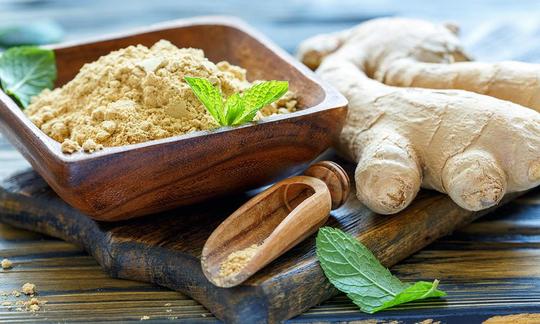

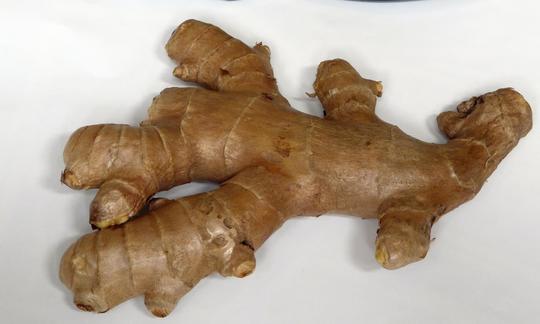

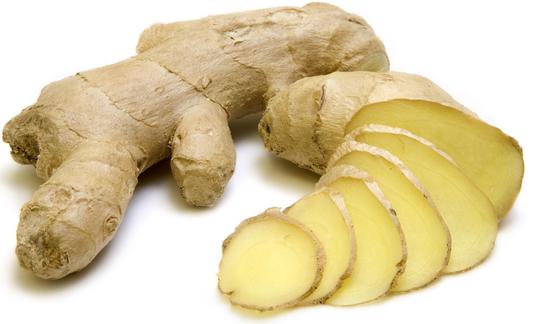

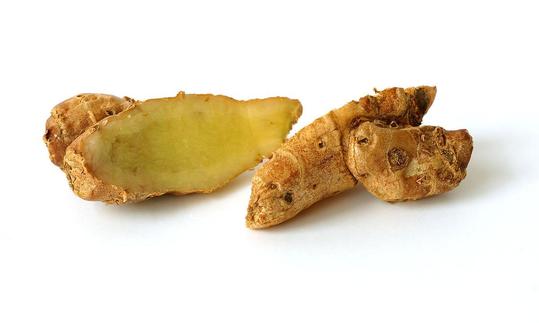

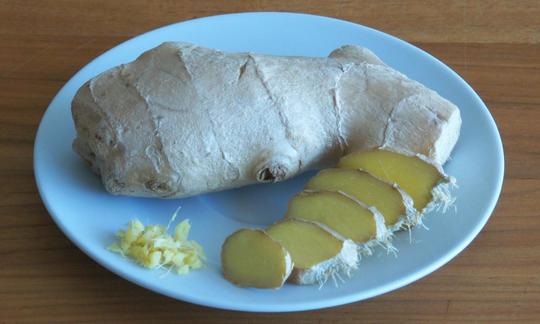

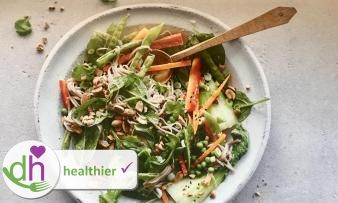
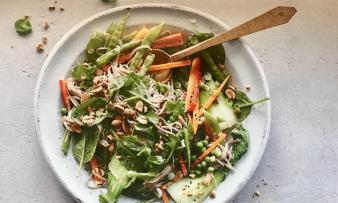
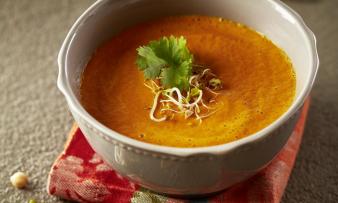





Comments